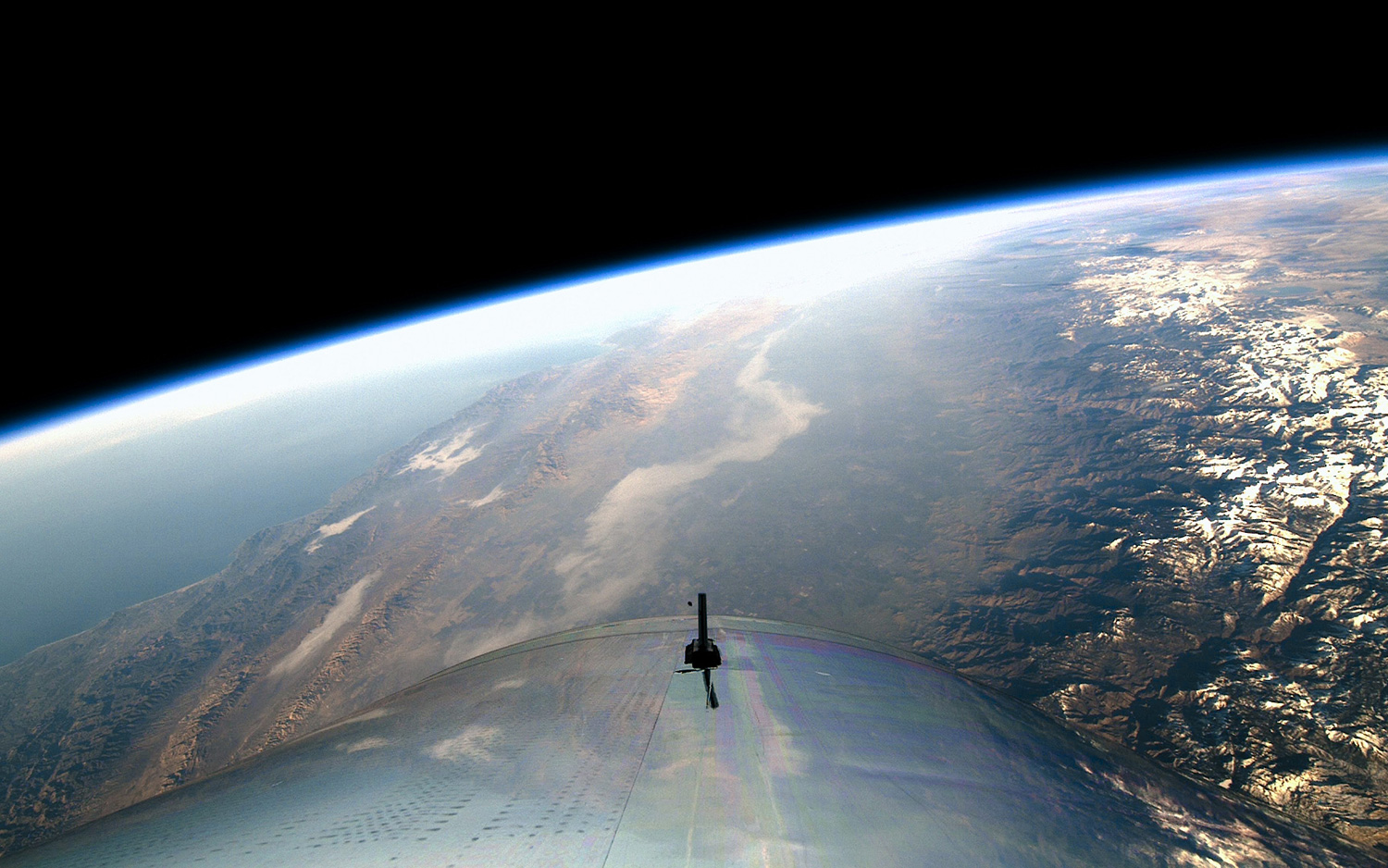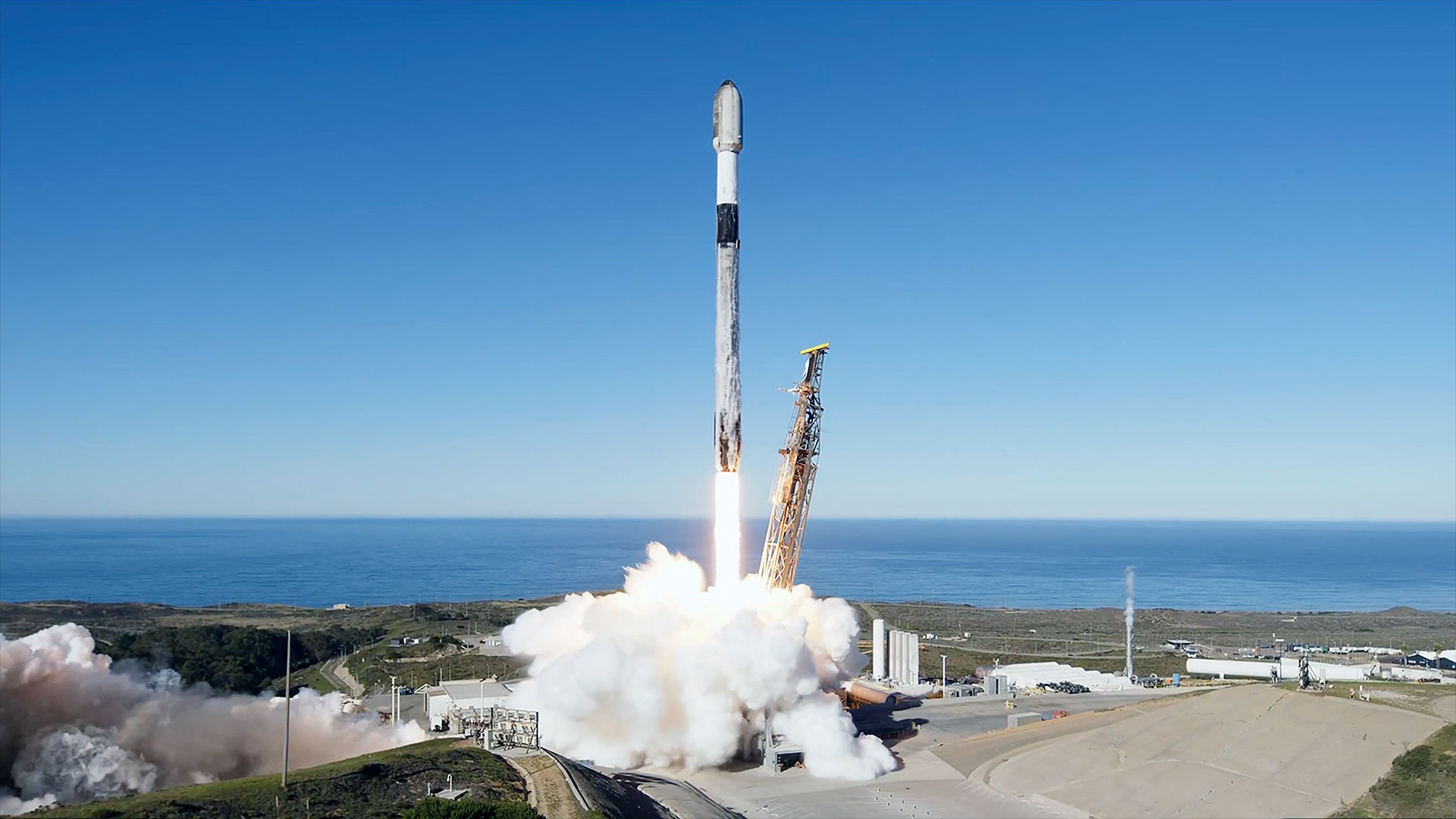SpaceX's astronaut launch debut won't be the first human spaceflight from American soil since 2011

SpaceX's first crewed mission, which is set to launch on Wednesday (May 27), will be epic and historic. But, despite what you may have heard, it doesn't mark the return of human spaceflight to American soil.
The suborbital space tourism company Virgin Galactic notched that milestone on Dec. 13, 2018, during a rocket-powered test flight of its VSS Unity space plane. Pilots Mark Stucky and C.J. Sturckow took Unity to a maximum altitude of 51.40 miles (82.72 kilometers) on that mission, which took off from and landed at Mojave Air and Space Port in the Southern California desert.
And on Feb. 22, 2019, pilots Dave Mackay and Mike Masucci and Virgin Galactic's chief astronaut instructor, Beth Moses, went 55.9 miles (89.9 km) above Earth's surface aboard Unity on another test flight out of Mojave.
Related: Virgin Galactic's SpaceShipTwo VSS Unity spaceliner in pictures
All five fliers were therefore awarded commercial astronaut wings by the U.S. Federal Aviation Administration, which deems space to begin at an altitude of 50 miles (80 km). And many other agencies and organizations share that standard, including NASA and the U.S. Air Force.
(The 50-mile mark isn't universally accepted, however. For example, the Fédération Aéronautique Internationale, the ruling body on world air sports, puts the boundary at an altitude of 62 miles, or 100 km.)
But VSS Unity is a suborbital vehicle, so it did not circle our planet. No person has launched to Earth orbit from the United States since July 8, 2011, when the space shuttle Atlantis lifted off on the final mission of NASA's venerable shuttle program. Since then, American astronauts have relied completely on Russian Soyuz rockets and spacecraft, which launch from Baikonur Cosmodrome in Kazakhstan, to get to and from the International Space Station (ISS).
Breaking space news, the latest updates on rocket launches, skywatching events and more!
The upcoming SpaceX mission, called Demo-2, will break that stranglehold, if all goes according to plan.
Demo-2 will send NASA astronauts Bob Behnken and Doug Hurley to and from the ISS aboard a Crew Dragon capsule, which will launch atop a Falcon 9 rocket from Kennedy Space Center in Florida.
And Demo-2 is not a one-off. As its name suggests, the mission is a demonstration, a test flight designed to fully validate Crew Dragon and the Falcon 9 for crewed flight. SpaceX holds a $2.6 billion contract to fly six operational crewed missions to and from the ISS for NASA, and the first of those is expected to lift off later this year if all goes well with Demo-2.
Boeing holds a similar commercial crew deal with NASA, which the company plans to fulfill using a capsule called CST-100 Starliner. But Starliner isn't ready to fly astronauts yet; the spacecraft still needs to ace an uncrewed visit to the ISS, a milestone Crew Dragon achieved in March 2019. (Starliner launched on such a mission this past December but suffered several glitches and was unable to meet up with the orbiting lab as planned.)
Virgin Galactic is gearing up for commercial operations as well, by the way. The company has moved the six-passenger Unity — one of a planned fleet of SpaceShipTwo space planes — to its commercial hub, New Mexico's Spaceport America, and is wrapping up the vehicle's test campaign.
More than 600 people have booked seats aboard SpaceShipTwo, which will offer passengers a few minutes of weightlessness and great views of Earth against the blackness of space, Virgin Galactic representatives have said.
And Virgin Galactic isn't the only company developing a passenger-carrying suborbital system. Blue Origin, which is run by Amazon.com founder Jeff Bezos, has launched numerous uncrewed test flights of its New Shepard vehicle and could begin commercial operations soon as well.
- How Virgin Galactic's SpaceShipTwo works (infographic)
- Virgin Galactic's SpaceShipTwo makes 1st glide flight over Spaceport America
- How SpaceX's Crew Dragon Demo-2 mission will work in 13 steps
Mike Wall is the author of "Out There" (Grand Central Publishing, 2018; illustrated by Karl Tate), a book about the search for alien life. Follow him on Twitter @michaeldwall. Follow us on Twitter @Spacedotcom or Facebook.
OFFER: Save 45% on 'All About Space' 'How it Works' and 'All About History'!
For a limited time, you can take out a digital subscription to any of our best-selling science magazines for just $2.38 per month, or 45% off the standard price for the first three months.

Michael Wall is a Senior Space Writer with Space.com and joined the team in 2010. He primarily covers exoplanets, spaceflight and military space, but has been known to dabble in the space art beat. His book about the search for alien life, "Out There," was published on Nov. 13, 2018. Before becoming a science writer, Michael worked as a herpetologist and wildlife biologist. He has a Ph.D. in evolutionary biology from the University of Sydney, Australia, a bachelor's degree from the University of Arizona, and a graduate certificate in science writing from the University of California, Santa Cruz. To find out what his latest project is, you can follow Michael on Twitter.

